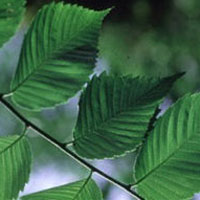Slippery Elm
 © Steven Foster
© Steven FosterHow It Works
The mucilage of slippery elm, found in the inner bark, gives it the soothing effect for which it is known.2 In people with heartburn, the mucilage appears to act as a barrier against the damaging effects of acid on the esophagus. It may also have an anti-inflammatory effect locally in the stomach and intestines. This soothing effect may also extend to the throat. Clinical research, verifying these effects in humans has not been conducted.
How to Use It
The dried inner bark in capsules or tablets, 800–1,000 mg three to four time per day, may be used. A tea can also be made by boiling 1/2–2 grams of the bark in 200 ml of water for ten to fifteen minutes, then cooled before drinking. Three to four cups a day can be used.3 Tincture, 5 ml three times per day, can be taken as well. Slippery elm is also an ingredient of some sore throat and cough lozenges.
Copyright © 2024 TraceGains, Inc. All rights reserved.
Learn more about TraceGains, the company.
The information presented by TraceGains is for informational purposes only. It is based on scientific studies (human, animal, or in vitro), clinical experience, or traditional usage as cited in each article. The results reported may not necessarily occur in all individuals. Self-treatment is not recommended for life-threatening conditions that require medical treatment under a doctor's care. For many of the conditions discussed, treatment with prescription or over the counter medication is also available. Consult your doctor, practitioner, and/or pharmacist for any health problem and before using any supplements or before making any changes in prescribed medications. Information expires December 2024.
